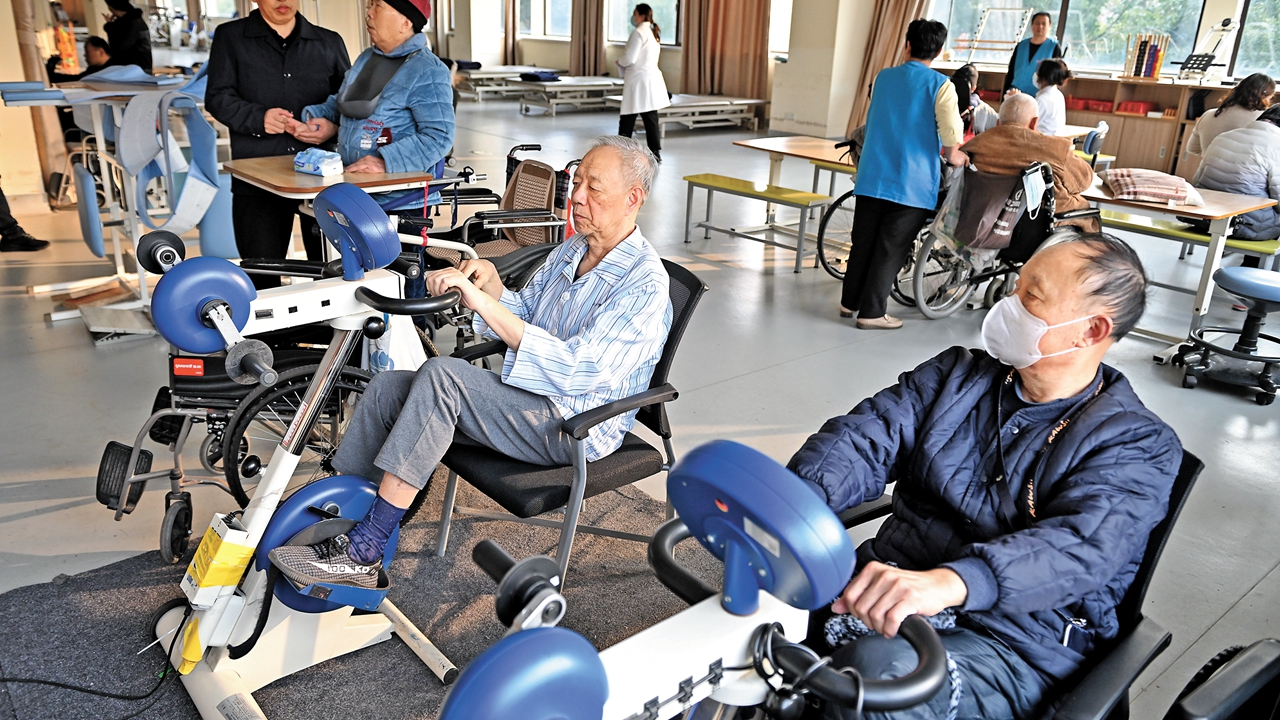Decoding China's reforms with 6 buzzwords
Writer: | Editor: Lin Qiuying | From: | Updated: 2024-08-12
This summer, a new book featuring articles by senior Chinese officials and over 100 Q&As has become a go-to guide for anyone seeking to better understand the latest blueprint of China’s reforms.
This book provides an in-depth look at the strategies shaping the future of the nation, explaining the initiatives laid out in a resolution adopted in July on further deepening reform to advance Chinese modernization.
Here we select six keywords frequently mentioned in the book to give readers a better grasp of China’s reform agenda.
Debut economy
Newcomers often generate a lot of buzz. The significance of the debut economy goes beyond a new product or brand launch; rather, it signifies the creation of a new business model and new supply chain, said Zhang Yina from Shanghai-based Fudan University.
The launch of a new product — a smartphone, electric car or just a new app — kick starts a whole chain of economic activity. Companies are showcasing their latest innovations, opening new stores, setting up research centers, and even establishing new headquarters to support these launches.
The debut economy is a marker for the innovativeness of a place, the vibrancy of its economy, and the strength of its consumer market. It speaks volumes of the place’s competitiveness, its influence and inclusiveness.
China’s retail shopping hubs like Shanghai and Guangzhou have unveiled a slew of measures to boost the debut economy, including supporting international brands in opening their first Chinese stores, streamlining the procedures for approving new product launches and facilitating customs clearance of imported debut products.

People interact with performers after a puppet show at a shopping mall in Changsha, Central China’s Hunan Province, in this May 7 file photo. Photos by Xinhua
Industries of the future
According to the new blueprint, China will funnel more funding for industries of the future. Driven by the latest technologies, these emerging industries have huge potential.
These industries are set to drive the next wave of tech and industrial transformation and fuel economic growth.
These include intelligent manufacturing, information tech, materials, energy, space and health related industries.
These future industries — think of artificial intelligence (AI), humanoid robots, and drones — aren’t just about cool gadgets. They will fundamentally change how we live, work and have fun.

Visitors learn about an electric vertical takeoff and landing (VTOL) aircraft during the 8th China-South Asia Expo in Kunming, Southwest China’s Yunnan Province, on July 25.
Developing the future industries will boost China’s overall competitiveness in the global economy, said Deng Zhou, a researcher with the Chinese Academy of Social Sciences.
Patient capital
China will encourage and regulate the development of angel investment, venture capital, and private equity investment, and better leverage the role of government investment funds. These are defined as patient capital, or money that focuses on long-term investment, unwavering in the face of unlikely short-term returns and willing to ride out the ups and downs of the market.
Li Sanxi, a researcher at Renmin University of China, believes the concept of patient capital has played a positive role in enhancing the confidence of investors. Such an attitude is essential to big, innovative projects that can transform the world. Cutting-edge technologies such as new medicines and groundbreaking AI advancements are not quick wins. They ask for time, money, and the patience to weather risks.
China’s State Council released a raft of measures in June to foster patient capital. The country will revise the regulations on the administration of foreign-invested venture capital (VC) firms to facilitate their investment in China.
New forms of employment
A recent survey of the national workforce revealed that 84 million people are now employed in unconventional jobs across China.
These are job types that have emerged with the rise of the internet and the digital economy, including food delivery, ride-hailing and livestream marketing services.
These jobs are embraced due to their availability and flexibility. For instance, if someone needs to find work quickly, they can often secure one of these platform-based jobs much faster than elsewhere.
New forms of employment will help change the structure of the job market and stimulate innovation and entrepreneurship, said Yu Shaoxiang, a senior researcher with the Chinese Academy of Social Sciences.
To better protect the rights of workers in a gig economy, China has pledged to build a more inclusive social security system, expanding the coverage of unemployment insurance, workers’ compensation, and childbirth insurance programs, according to the reform plan.
Impetus for births
China is improving policies and services to encourage couples to start families.
The government will provide better healthcare, accessible education, and all kinds of support for families raising children. Policies such as tax breaks, housing incentives and paid parental leaves will make childrearing more affordable.
Population is an important factor for sustainable economic development, which is why such policies are essential, said Yang Chenggang of Southwest University of Finance and Economics.
Silver economy
The silver economy, which involves economic activities geared toward providing products and services to older adults, ranges from regular healthcare, dining and care-giving services to more niche sectors like anti-aging products, elder-friendly tourism and financial products tailored for retirement.
Statistics show that the value of China’s silver economy now stands at around 7 trillion yuan (US$ 980.58 billion), and it is expected to reach around 30 trillion yuan by 2035.

Senior citizens exercise at a rehabilitation hospital in Changzhou, East China’s Jiangsu Province in this Jan. 9 file photo.
China is focusing on the silver economy because it’s facing a demographic shift with an aging population — just like many other economies in the world. By the end of 2023, China’s population aged 60 or above had reached 297 million, accounting for 21.1% of the total. Among them, 217 million were aged 65 or above, making up 15.4% of the population. China is a moderately aging society according to international standards. China is working to ensure that its aging population can live comfortably and with dignity, while tapping into new growth potentials.
Together, these six buzzwords outline a reform strategy that highlights China’s commitment to innovation, sustainability and inclusiveness. (Xinhua)